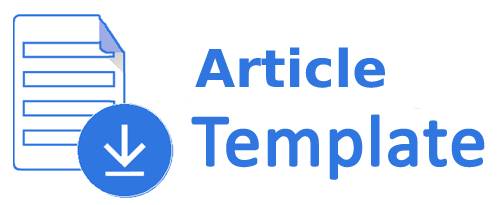On Size, Growth and Impact of Life Science Journals
DOI:
https://doi.org/10.17821/srels/2005/v42i3/44515Keywords:
Measuring Growth, Fields and Subfields, Life Science JournalsAbstract
Measuring the growth of fields and subfields has been carried out using publication output in different fields. However, not all published literature contribute to the growth of a discipline and thus the publications with impact alone are being used in many recent studies. In measuring subfield growth, general impact is not considered as a suitable parameter. Scientometricians have resorted for subfield impact to study the subfields for observing growth, impact etc. In this study, both general impact of journals in a field (impact factor) and subfield impact (subfield corrected impact factor) are used to measure the growth, size and impact of subfields in life sciences.Downloads
Downloads
Published
How to Cite
Issue
Section
License
All the articles published in Journal of Information and Knowledge are held by the Publisher. Sarada Ranganathan Endowment for Library Science (SRELS), as a publisher requires its authors to transfer the copyright prior to publication. This will permit SRELS to reproduce, publish, distribute and archive the article in print and electronic form and also to defend against any improper use of the article.
Accepted 2014-01-03
Published 2005-09-03
References
Lukkonen (T). Why has Latour's Theory of citations been ignored by the Bibliometric Community? Discussion of sociological interpretations of citation analysis. Scientometrics. Vol. 38; 1997; p27-37.
Kostoff (R N). Citation analysis cross-field normalization: a new paradigm. Scientomerics. Vol. 39; 1997; p225-230.
Makino (J). Productivity of research groups - relation between citation analysis and reputation within research communities. Scientometrics. Vol. 43; 1998; p87-93.
Ali (S N); Young (H C); Ali (N M). Determining the quality of publications and research for tenure of promotion decisions: A preliminary checklist to assist. Library Review. Vol. 45; 1996; p38-52.
Balaban (A T). How should citations to articles in high and low impact journals be evaluated or what is a citation worth? Scientoemtrics. Vol. 37; 1996; p495-498.
Hooydonk (G Van); Gevart (R); Mills-Prosst (G); de Sompel (H Van); Debackere, A bibliotheeconomical analysis of the impact factors of scientific disciplines. Scientometrics. Vol. 30; 1984; p65-81.
Egghe (L); Rousseau (R). Average and global impact factors of scientific disciplines. Scientometrics. Vol. 36; 1996; p97-107.
Averaging and globalising the quotients of informetric and scientometric data. Journal of Information Science. Vol. 22; 1996; p165-170.
DeBruin (R.E); Kint (A); Luwel (M); Moed (H.F). A study of research evaluation and planning: the university of Ghent. Research Evaluation. Vol. 3; 1993; p24-41.
Srinivasan (R); Raman (V); Meyyappan (N); Pichappan (P). Assessment of the impact of the journal literature produced by Indian CSIR laboratories using subfield corrected impact. Scientometrics. Vol. 44; 1999; p81-92.
Garfield (E). The Impact factor. Current Contents. Vol. 20; June 1995; p3-6.
Citation Indexing for Studying Science. Nature. Vol. 227; 1970; p669-671.
Citation Analysis as a tool in journal evaluation. Science. Vol. 178; 1972; p471-479.
Hooydonk (G Van). Standardizing relative impacts: Estimating the quality of research from citation counts. Journal of the American Society for Information Science. Vol. 49; 1998; p932-941.
Cost and citation data for 5399 scientific journals in connection with journal price setting, copyright laws and the use of bibliometric data for project review. Serial Librarian. Vol. 27; 1995; p45-58.

 A. Kaliammal
A. Kaliammal








